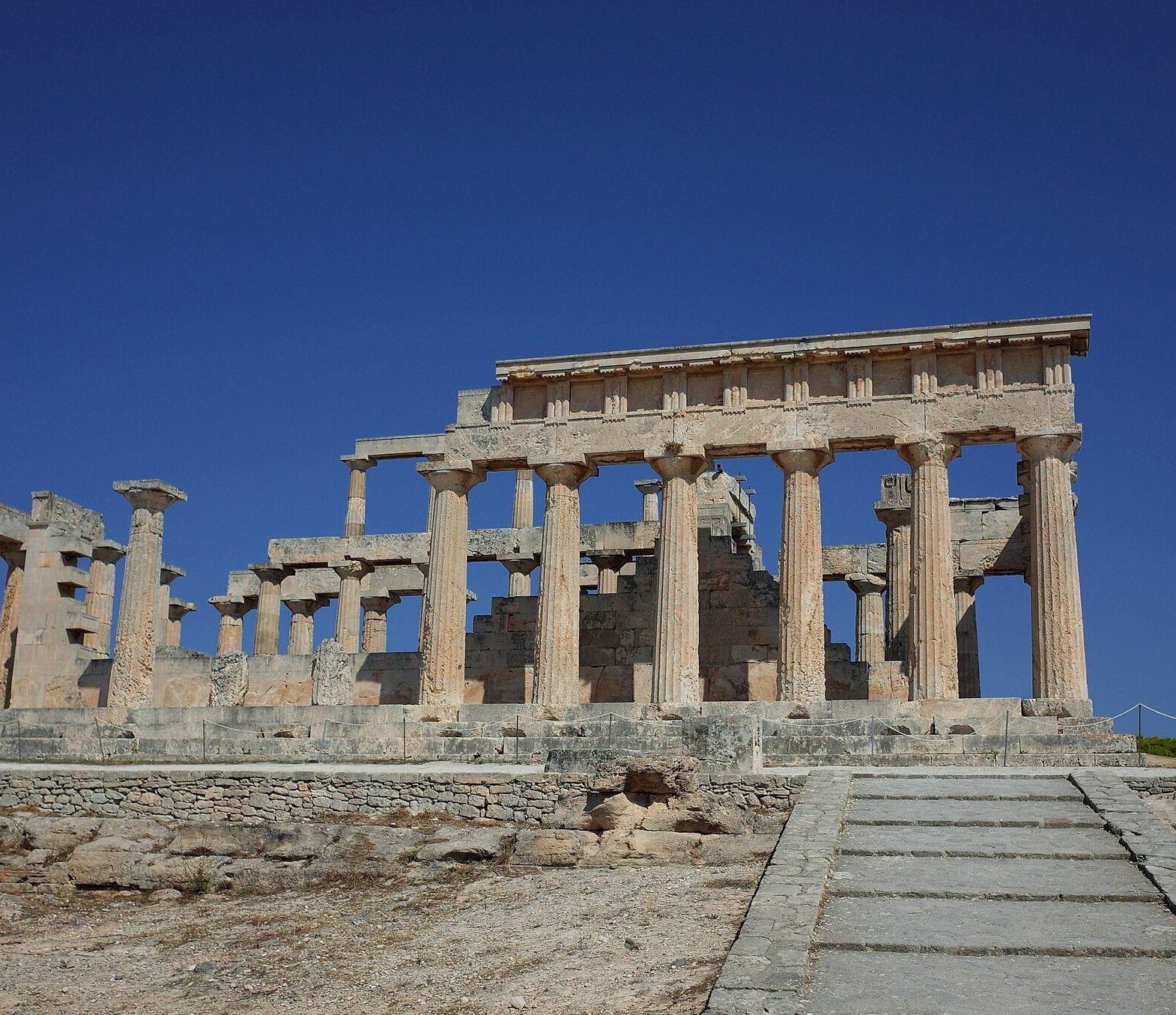Temple of Aphaia Aegina stands proudly on a pine-covered hill on the eastern side of the island. At 160 meters above sea level, the location provides stunning views of the Saronic Gulf. On clear days, visitors can see both the Parthenon in Athens and the Temple of Poseidon at Cape Sounion. As a result, these three temples form the well-known “sacred triangle” of ancient Greece.
Builders constructed the Temple of Aphaia around 480 BC. They used local limestone to shape the structure in the Doric style. Before this version, an earlier temple stood on the site but burned down. However, the new builders reused several pieces from the older temple to preserve its history. They dedicated the new temple to Aphaia, a local goddess later linked to Athena.
Moreover, the temple’s layout features 32 sturdy columns. Today, 24 of those still stand tall. The pediments once displayed carved scenes from the Trojan Wars, celebrating heroic figures from Aegina. Although the original sculptures now sit in the Glyptothek Museum in Munich, the temple still impresses visitors with its design and symmetry.
The temple welcomes visitors daily from April to October. Opening hours run from 8:30 a.m. to 7:30 p.m. During the winter months, the hours change, so visitors should check in advance. The entry fee costs €6 for adults and €3 for seniors. Children under 18 can enter for free.
Traveling to the temple is easy and convenient. Buses run regularly from Aegina Town to Agia Marina, passing close to the site. In addition, taxis and rental cars provide flexible options. For those staying in Agia Marina, the temple sits within walking distance, although the uphill path may require effort.
Overall, the Temple of Aphaia Aegina combines breathtaking scenery with rich history. Because of its cultural importance and stunning setting, it remains one of Aegina’s most rewarding destinations.



Comment (0)